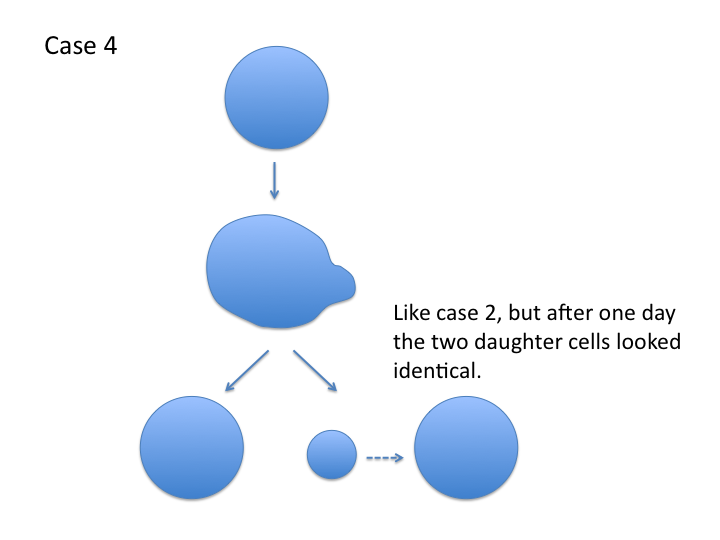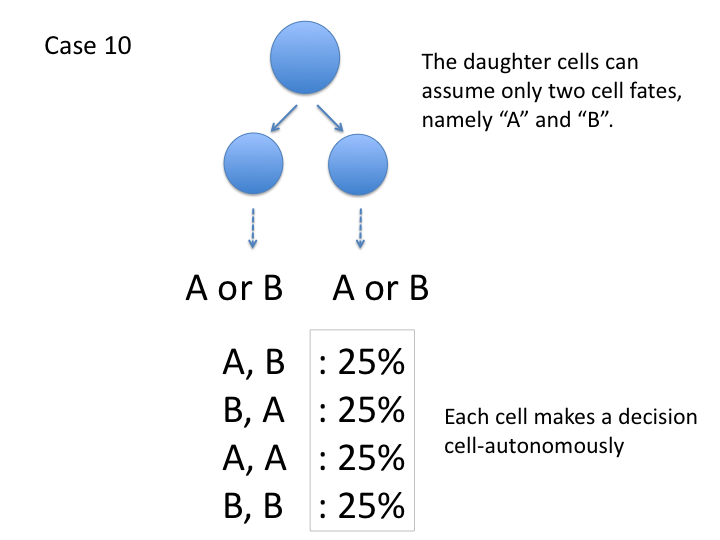October 28, 2011
Asymmetric division
Rhyu MS, Jan L, Jan YN
Asymmetric distribution of numb protein during division of the sensory organ precursor cell confers distinct fates to daughter cells.
Cell 76: 477-491, 1994
To those of you who attended the class on October 28,
On October 28th we discussed what "asymmetric division" is . We looked at several scenarios of cell division, and tried to figure out whether each division can be classified as an "asymmetriv division". I did not provide an Yes/No type answer to each examples, because there is no absolutely correct definition of "asymmetric division", and for each definition there may be a "grey zone". In developmental biology, goal is not the "classification" per se, but a deeper understading of the phenomenon. I hope attending this class provided an opportunity to for you to re-think critically about things that you thought you knew.
For your "entertainment", below I reproduce a few examples of cell divisions that I showed during the class. Take a look at them again and try to build your opinion on whether or not they should be classified as "asymmetric division". This is neither a homework nor an assignment that will be used to determine your grades. It is provided simply to aid your own development and differentiation as a scientist.
Enjoy!
Yash Hiromi (Department of Genetics, SOKENDAI)
 |
The cell exhibited "budding" during cell division. Two daughter cells initially had different cell size, but after one day they looked identical. |
 |
The two daughter cells looked identical , but showed some difference in their molecular constituents. The cell with more A (and a bit less C) had the higher probalibilty of assuming the "A" fate (i.e., the correlation between the molecular asymmetry and the ultimate cell fate (A vs. B) was not 100%, but rather a "bias". ) |
 |
The right daughter and the left daughter assumed fates A and B in an independant manner, and there were many cases where both daughter cells took the same fate. |
I referred to Michel Sadel's "Justice" course as an example of a course that is run by posing questions to stimulate critical thinking. For those of you who are not familiar with his lecture style, here is a link to his lecture series "Justice".
http://www.justiceharvard.org/